Builder’s Risk Insurance is a type of property insurance designed to protect buildings and structures while they are being constructed. This insurance provides essential coverage for various risks that are unique to construction projects. Understanding the key components and coverage options is crucial for anyone involved in building, whether you’re a property owner, contractor, or developer.
Construction projects can face many challenges. These include risks like fires, theft, and natural disasters that could cause delays and financial losses. Builder’s Risk Insurance helps manage these risks by covering costs associated with damage or loss during the construction phase. It’s specifically tailored to protect the interests of everyone involved in the project.
By familiarising yourself with the fundamentals of Builder’s Risk Insurance, you can make informed decisions to protect your construction investment. So, let’s delve into the different coverage elements, advanced options, and the claims process, ensuring you know what to expect and how to maximise your coverage effectively.
Coverage Elements
Builder’s Risk Insurance includes several key coverage elements that address various risks on a construction site. Here’s a breakdown:
- Structure and Materials: This coverage protects the building under construction and materials on-site, in transit, or temporarily stored at other locations. It ensures that if the structure gets damaged or the materials are lost or stolen, the insurance will cover the cost of replacement or repair. This element is essential as it safeguards the primary asset—the building itself.
- Equipment and Tools: Construction projects often rely on specialized equipment and tools, which can be pricey and vital for the project’s progress. Builder’s Risk Insurance covers damage or loss of these items. This includes protection for machinery like cranes, loaders, and other essential tools required for construction.
- Temporary Structures: Temporary structures such as scaffolding, fencing, and temporary shelters are common on construction sites and play a critical role in the safety and efficiency of the project. Builder’s Risk Insurance also covers these temporary structures, ensuring the construction process can continue smoothly even if these vital elements are damaged or destroyed.
Advanced Coverage Options
In addition to basic coverage, Builder’s Risk Insurance offers advanced options to cover more complex risks and additional expenses that may arise during construction:
- Soft Costs and Business Income: Soft costs are additional expenses that may not be covered under standard policies, such as legal fees, architectural costs, and interest on construction loans. Business income coverage includes protection against income lost due to construction delays caused by covered incidents. This ensures that any financial disruptions are minimized, and the project can stay financially stable.
- Endorsements for Specific Risks: Construction projects can face unique challenges, such as floods or earthquakes, which may not be covered under a standard policy. Endorsements allow you to add specific coverage for these risks. This is particularly important in areas prone to such events, like Mississauga, Ontario, where adding flood or earthquake coverage can provide an extra layer of financial protection.
Upgrading your Builder’s Risk Insurance policy with these advanced options can provide a more comprehensive safety net. This ensures that even the most unexpected costs and risks are covered, allowing for a smoother, less stressful construction process.
Claims Process
Filing a claim under Builder’s Risk Insurance involves several steps. Understanding this process is crucial to ensure you receive the coverage you need. Here are the key steps:
- Immediate Reporting: As soon as a loss or damage occurs, report it to your insurance provider. Prompt reporting is essential and can affect the claim’s outcome. Provide as much detail as possible about the incident.
- Documentation and Proof: Gather all necessary documentation to support your claim. This includes photographs of the damage, receipts for materials and equipment, construction contracts, and any other relevant documents. Proper documentation will make the claims process smoother and quicker.
- Inspection and Evaluation: Your insurance provider will likely send an adjuster to inspect the site and assess the extent of the damage. Cooperate fully during this inspection to ensure a thorough evaluation. The adjuster will determine the cause of the damage and estimate the cost of repairs or replacements.
- Settlement and Repair: Once the adjuster’s report is complete and the claim is approved, you will receive a settlement. This payout is used to cover the cost of repairs and replacements so that construction can resume without financial strain.
Knowing the claims process ahead of time will help you act quickly and efficiently if an incident occurs on your construction site.
Securing Your Build: The Key Components of Builder’s Risk Insurance
Builder’s Risk Insurance is vital for anyone involved in construction projects in Mississauga, Ontario. It provides essential protection for the building, materials, equipment, and temporary structures, helping to shield you from significant financial losses. Advanced coverage options, such as soft costs and endorsements for specific risks, offer added security, ensuring comprehensive protection.
Understanding the claims process in detail ensures that you’re prepared to act swiftly if the need arises. Prompt reporting, thorough documentation, and full cooperation with the insurance provider are crucial steps in securing your claim.
Having the right coverage is key to a successful and stress-free construction project. For expert advice and tailored Builder’s Risk Insurance solutions, contact Ai Insurance Organization Inc., one of the best bonded insurance companies in Canada. Our experienced brokers are ready to help you navigate all your insurance needs, ensuring that every aspect of your project is protected!
Disclaimer: The information provided in this article is intended for illustrative purposes only and should not be considered as actual insurance advice. Our articles offer insights and general guidance on various insurance topics however, they do not substitute professional advice tailored to your specific circumstances. For expert, personalized insurance advice and solutions, please contact our licensed insurance brokers.












